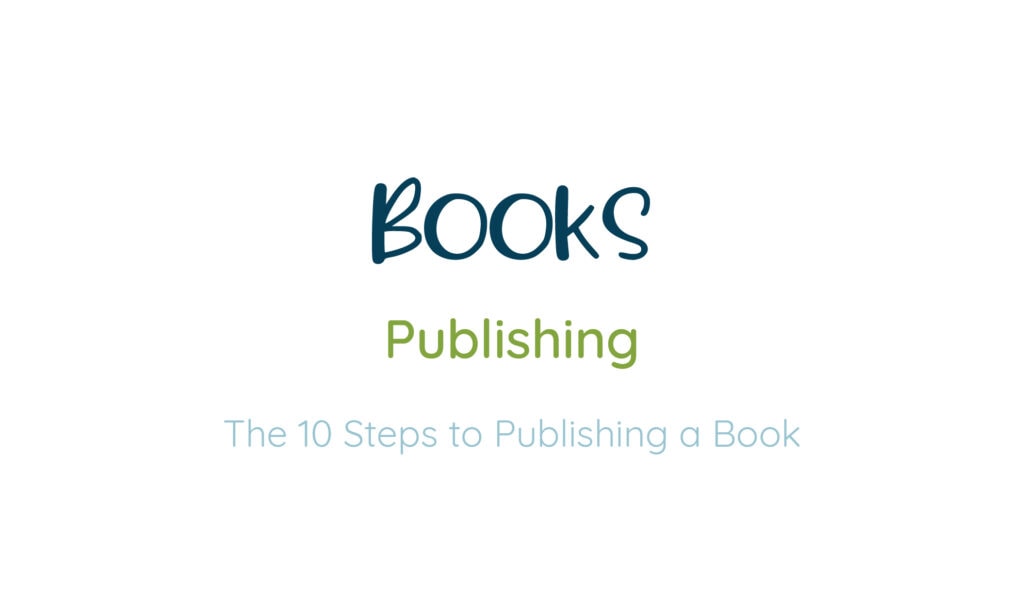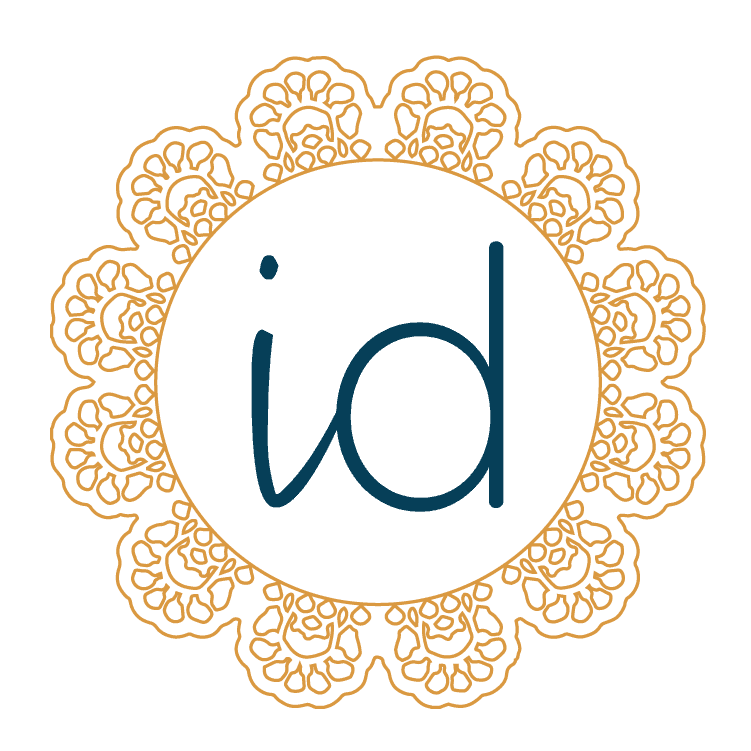The “10” Steps to Publishing a Book
The advantage of being a production artist (book designer) is that I get to work on a wide variety of books starting at every phase of the publishing process. Since I stepped into the publishing world back in 2020 I’ve had the pleasure of working with over 100 authors on almost 200 books and I’ve seen the mistakes, the triumphs, the print errors, and the beauty of doing things the right way. Not that there is an explicitly “wrong” way but there are just some steps you shouldn’t skip. Each book and each author is unique and no two publishing journeys are exactly the same but following the tried and true steps will get you close to having a professional book that you can be proud of and that will make marketing a little easier. If you need additional help or just need someone to hold your hand throughout the entire process (I help with as much as I can) I recommend At Home Author and Colleen Brunetti to work with you through every step from writing to marketing!
Table of Contents
Step 1 – Writing
It might seem obvious but writing your book will always be the first step, no matter what publishing route you plan on taking. You can start with pen and paper but please know you’ll have to transition to a digital Word document eventually. While you write your book you’ll do some self-editing along the way. You may want to get a peer review/beta read at this point as well to get some genuine feedback on your plot and general story before moving on to invest in the next step.
Step A – Marketing
Did you think this started later once your book was done?? NOPE! Marketing your book should start as soon as you’ve decided to take the dive into publishing. You can wait until after editing is done but start thinking about it sooner rather than later.
Step 2 – Editing
Edit, edit, edit, and edit some more! After you are happy with your self-edit you’ll move onto the editing phase with a professional editor who is up to date on best practices and the correct style guide (typically CMOS) for your book.
Finding the right editor for your project can be daunting with so many people claiming to be the best and trying to go with the most affordable option or thinking that the most expensive option is the best. Please don’t be fooled—do your homework (get referrals, read reviews, ask for examples). I’ve seen books that went through editing but were nowhere near ready. Typos, grammatical errors, and a few missed commas are the least of your worries, you want to make sure that your manuscript is locked down and your story is the best that it can be. That’s why there are different kinds of editors.
Whether you’re self-publishing or going the traditional route you’ll want to polish your manuscript to a very final state. Make it the shiniest diamond it can be!
Types of edits
- Self-edit
- Developmental (Content Critique)
- The editor will look at your plot and story as a whole.
- This would also be when rhyme and meter are refined.
- This is the most common step that is skipped and can make the biggest difference in developing your story to its full potential.
- Copyedit (Line-by-line)
- Grammar, syntax, punctuation, etc.
- Proofread
- Final check to catch any little mistakes, missed commas, stacked words, orphans, etc. in the final file before it’s off to the printer. I can’t tell you how valuable a proofread is!
Here’s a list of editors that I trust and that I know do fantastic work
Pause
If you are going to try going the traditional publishing route then you would stop here but still do Step C.
For traditional publishing, you’ll work on getting an agent first and then they’ll pitch to publishers for you.
Here’s a list of agencies open to submission and other ways to find them and submit.
Here’s the Top Children’s Book Publishers Accepting Submissions in 2023
Still keen on self-publishing? Great! Let’s keep going!
Step 3 – Layout
Before moving on to illustrations it’s best to have a rough layout of how you want your book pages to flow. You may work on this with your editor or a designer/production artist. This step includes breaking up your manuscript by pages and including illustration notes that will help guide your illustrator. This can be as simple as comments or notes in a Word/Google Doc or one step further as a PowerPoint/Slides presentation the text placed on each page with notes. This second format is a Book Dummy and gives you a better idea of how your book is going to flow before it really starts coming to life.
The final pagination of your book will also depend on what your final print format will be and how you’re going to print. Offset: self-ended, separate-ended, Print-on-demand: paperback, or hardcover, each format has slightly different requirements for your final print file and page count.
Working with a designer can make this process much easier if your illustrator doesn’t provide design services (What does a book designer do?). When working with a designer/production artist at this phase we can work with your illustrator and facilitate all technical communication with them to make sure everything is being created to the proper specifications and with the best possible layout in mind. As a production artist, I also offer art direction so I can help with those initial illustrator notes and stay in the loop as illustrations are produced.
Step B – Fundraising
Want to do an offset print run but don’t have $4000 lying around and you don’t want to save for months and months to reach that goal? This is why Kickstarters (and other crowdfunding campaigns) are a key component in self-publishing. This is NOT you begging or just asking for money and giving nothing in return. It’s a pre-order campaign utilizing a strong platform and dedicated marketing efforts to reach a goal and then fulfill all the orders that your backers placed while funding and keeping the ones left over.
Kickstarter, IndieGogo, and your own website are a few ways to go about doing a pre-order crowdfunding campaign and it’s a great strategy to fund a print run and possibly cover all additional publishing costs if you do your math right and work your tush off on your marketing before and during your campaign.
Other options aside from a crowdfund, pre-order, or long-term saving are looking for and applying to any grants available to you, getting a loan, and/or getting an investor to fund your book- this can look like a partnership or collaboration with a company or non-profit that your book might be the perfect fit for them to want to work with you. But all of this takes dedication and time; publishing can be a small hobby or it can be a small business endeavor and it will produce as much as you are able to put into it.
Step 4 – Illustration
Probably the most exciting part of the process is watching your illustrations come to life! From mere notes on a page to rough sketches, line work, to full-color renderings of the images that only existed in your head. The illustration process is so much fun to follow and this step has its own phases to follow.
Phases of illustration
- Sample illustration
- This can be a full page or your initial character design and should be a paid sample.
- You might get a few samples from different illustrators before finding the right one.
- Sketch
- Rough sketches of each page and spread of your book. They can be super rough stick figures or slightly more refined line work depending on how your illustrator works.
- This is when major art and layout changes/decisions are made. You should be able to request completely different layouts and your designer should mention any possible problem areas for text placement.
- Line art
- Some illustrators will go from sketches to line work. This is when the sketches are cleaned up and become a little cleaner/more refined before moving on to color.
- Any changes that were not requested during the sketch phase should happen now. Any additional character designs should be finalized at this point.
- Color
- Final rendering and full color will happen at this phase.
- Only minor edits should be requested at this point as it’s much harder to make changes at this point. Minor revisions would include color changes and shifting elements.
Step 5 – Design and Formatting
The art is ready to go and it’s time to add the words. Ideally, your designer has already started working with you and knows the art has proper room for text on each page but even when we do that we might still need to nudge some elements a little bit to accommodate any special text treatments. During typesetting we’re not just slapping text on a page, we’re carefully choosing fonts, placing text where it best fits and makes sense within the illustration, possibly highlighting accent words with a secondary font, and creating dynamic text treatments that enhance the story and work together with the artwork. Text should never detract from the art and when they can work in unison it makes for a great book. Poor text placement can make a fantastic book fall flat and that’s why this isn’t a step that should be taken lightly.
For more information check out my Book Design FAQ page and What does a book designer do? article.
To get you started on the right foot, download the Book Design Checklist and let me know if you have any questions. On the checklist, you’ll see the parts that I require but also list a few additional optional components to get your book ready to publish. Starting with your ISBNs, LCCN, CIP Block, and other parts that I’ve covered on this Publishing 101 list.
Step 2.5 – Editing, again
Yes, one final round of editing! It’s the final proofread before the book gets published/goes to print. Here is when any last-minute changes will happen to the text and artwork. A good proofreader will call out even the smallest inconsistencies that you just didn’t catch before. Remember it’s normal, we’re only human, and staring at something for months will make you blind to the little things (sometimes even big things!).
Once any final edits are implemented your designer will send you all of your final files ready to upload and send off for printing. (Types of files you’ll need for your book)
At this point, you can also submit your book for official copyright filing (US- copyright.gov).
Step 6 – Printing
Are you just doing print-on-demand? Cool! Then you’re all done and they’ll handle printing and distribution for you. You can order author copies if you’d like some physical copies on hand. Do you want to do both POD and a print run? You can do that too and this decision should have been made early on so you can have all the print files you need that adhere to your chosen printer’s specifications. Printing and delivery of your books can take 2-3 months to arrive from China but it’s SO worth it. Doing a dedicated print run gives you access to better quality paper, different and larger trim sizes, and special cover finishes like spot UV, glitter, and embossing. Having trouble deciding on which route to go on? Check out Print-on-Demand or Offset?
Here’s a list of US and China-based printers that I have worked with and have been very happy with the quality.
Step 7 – Publishing
It’s ready!! It’s time!! But how?? Well, that is up to you and how you choose to get your book out in the wild and into the hands of the public. You can go through print on demand and utilize their printing and distribution options, you can use Amazon Seller Central or Advantage programs if you do an offset print run, you can even sell directly from your website (Should I Build My Own Website?). Finding a distribution company to pick up your offset copies is another option but they tend to work with authors that have a proven track record of high sales and an established following.
The most common combination will be KDP and Ingramspark to give you the best possible reach and cost within the print-on-demand companies. Print on Demand or Offset? is up to you, your budget, and your goals. There are authors that do great with just print-on-demand books but those will never compare to the quality and cost difference of an offset print run.
In addition to your print formats, you’ll most likely also have an ebook to upload. With children’s ebooks, it’s not so much about the kids but about having a marketing tool to generate reviews quickly and easily. You can take advantage of KDP Select which puts your ebook in the Kindle Unlimited library and allows anyone who is subscribed to download your book for free (you still get paid for pages read) but it also grants you the ability to do 5 free promo days (they don’t have to be consecutive) during each 90 day enrollment period. KDP Select is free to enroll and you can choose to cancel and not re-enroll.
If you choose to forgo KDP Select (they require exclusivity) then you can also upload your ebook to Draft2Digital, Apple Books, Google Books, and Barnes & Noble directly to increase your ebook distribution reach and cover all the outlets.
Step C – More Marketing
Yup, you read that right. More marketing. You just published a book! How else are people going to find it and buy it?? Marketing isn’t a ‘set it and forget it’ thing, it’s an ongoing, living, and breathing effort that will haunt you for the length of your publishing career. It can be fun if you enjoy the different aspects and it can be as easy or as complicated as you want it to be.
The easiest way to start is to utilize social media platforms to their fullest extent, post daily (or a few times a week), be informative in between sales posts and collaborate with other creators to stretch your reach. You can also reach out to news and radio stations, a few of my authors have been featured on their local news, and many have done podcast and magazine interviews too, thinking outside of the box for marketing avenues can be a fulfilling challenge.
In-person events might get you out of your comfort zone but they are probably the most effective sales strategy for many authors. Book signings, author events, vendor events, and school visits are all great in-person events that can generate sales and even bulk orders.
Starting from square one, start your social media accounts and start building your subscriber list. You can start small by announcing that you wrote a book and to follow you and subscribe for more updates. Easy peasy! Just remember to update your audience at least once a month and work out a strategy that works for you while generating a steady flow of orders.
And as always, I’m happy to help so feel free to reach out with any questions!
Happy Creating!






